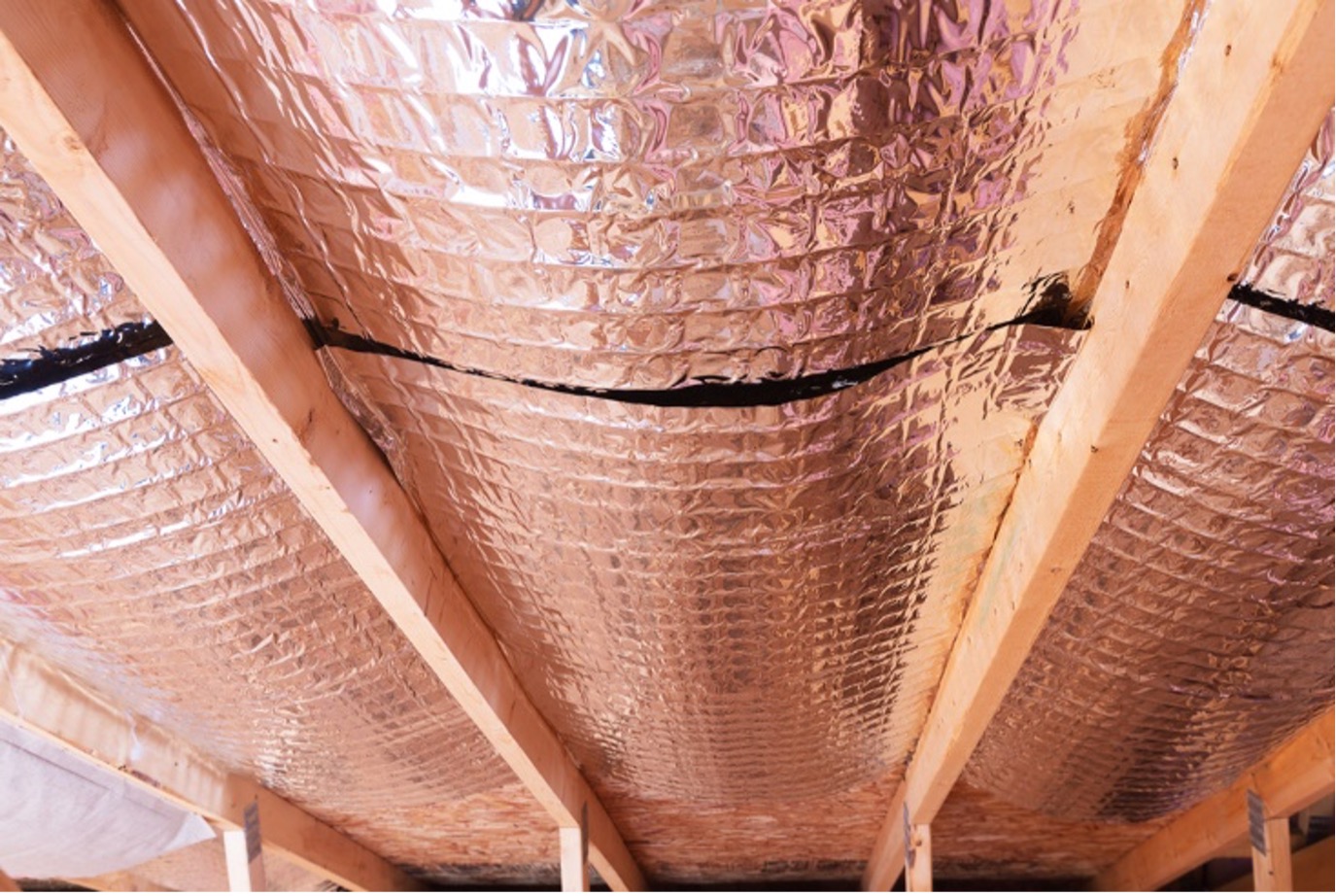What is Air Cell Insulation and How is it Used?

Air cell is a brand of insulation manufactured by Kingspan. The air cell brand has an array of different insulation varieties, each designed for differing insulation purposes around buildings. The air cell brand differs from other insulation types as it is made from a fibre-free foil rather than glasswool, rockwool or other types of fibre-based insulation that are commonly found in Australian buildings. This gives the insulation differing properties compared to wool batts, making it suitable for alternate applications. Kingspan recommends the air cell brand for steel-framed construction. The lack of fibres helps make the air cell range non-allergic, non-irritant, and non-asthmatic.
What is air cell insulation made from?
Air cell products are made from closed-cell foam insulation core. Both sides of the foam core are covered with reflective foil, helping to dramatically reduce heat absorption by reflecting 97% of radiant heat. The polymer air cell structure helps reduce heat absorption that leaks through the foil casing further due to the conductional resistance of the structure. Overall, the final product appears very thin in width from foil surface to foil surface due to the compressed polymer cell structure. It is much thinner than most fibre-based insulation batts, so it is suitable to fit into thinner spaces.
R-Value
The R-value of air cell insulation will vary depending on the variety of products you are dealing with. As with all insulation, any building developments must comply with R-value regulation dependant on the climate zone you are building in, alongside which part of the house you are placing the insulation. Walls and roofs have different R-value requirements as heat will enter and escape at different capacities through those surfaces. If you are unsure about what R-value is appropriate, consult an insulation expert for advice.
Air-cell insulbreak
The air-cell insulbreak is available in 3 different varieties: 55, 70 and 90. The declared product R-values of each variant are R0.15 m2. K/W (55), R0.20 m2. K/W (70), R0.25 m2. K/W (90) respectively. This type of insulation is suitable for application within both walls and roofs. It acts as a combination of insulation, vapour barrier and thermal break solution and is recommended for steel frame constructions. The R0.20 thermal break capabilities reduce thermal bridging and conductivity between the elements of any metal building. However, it is also possible to use Air-Cell insulbreak in timber framed applications and other non-steel framed buildings.
Air-cell Permifloor
As the name suggests, air cell Permifloor insulation is designed for floor-based insulation rather than roof and walls. The reflective surfaces and breathing holes offer a solution that manages heat and moisture simultaneously. The lack of fibres makes the insulation rodent and insect resistant, and the minuscule air hole perforations throughout the rolls prevent moisture build-up that can occur with insulation made from other materials.
Air-cell Permishield
Permishield and Permifloor hold very similar physical properties regarding water and moisture. This insulation type is designed for wall applications rather than floors, with the use behind lightweight clad wall materials. Permishield combines the properties of insulation and thermal breakage with a vapour permeable sarking, making it useful in situations where vapour permeance is required. Air cell’s fibre free manufacture makes it water resistant and unaffected by moisture.
Air-cell glareshield
Glareshield air cell roof insulation is designed for roof applications. This product is designed to act as a vapour and reflective barrier whilst insulating simultaneously. As with all air-cell products, this variety contains the closed-cell insulated core surrounded on both sides by reflective foil. The bronze anti-glare side of the product should always be facing the installer during the installation process to reduce light reflection and ensure the process is safe to complete, especially on high surfaces such as roofs where visibility is important.
Spending too much money on heating and cooling? Building a home or development and want to improve your energy rating? If you are looking to install air cell insulation into your development, visit our Insulation Essentials store to see which products we have on offer or organise for one of our insulation experts to get in contact and assist with the installation process, or if any further queries you have about the appropriate insulation for your building situation.
For more details, fill out our contact form, search our range of products or call us on (03) 8339 7111.
